(Figure 3.114) shows three concentric spherical conductors A,B,andC with radii R,2R, and 4R, respectively. A and C are connected by a conducting wire, and B is uniformly charged (charge=+Q). Find
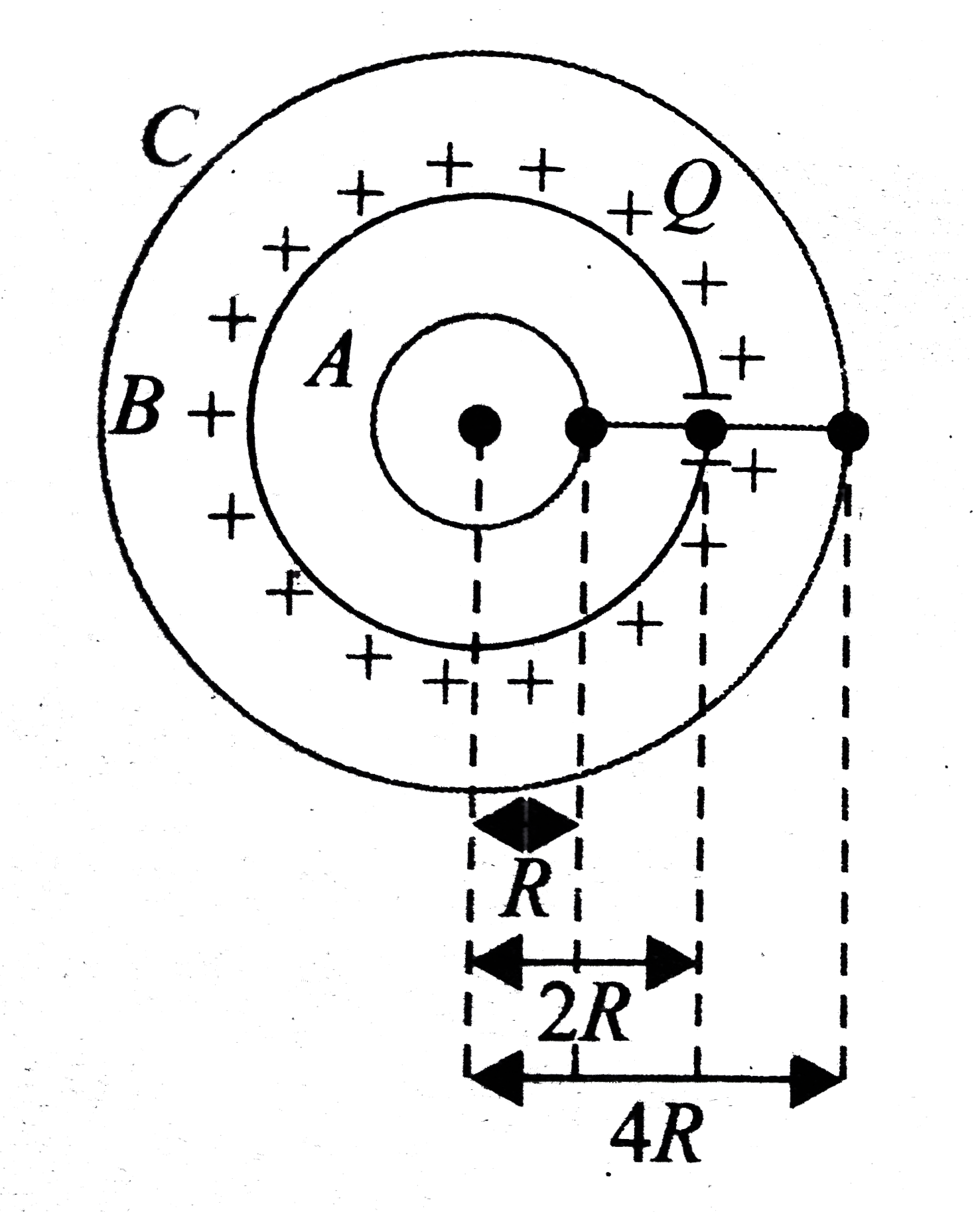 .
.
a. charges on conductors A and C, and
b. potentials of A and B.
The correct Answer is:a. qA=−Q3;qB=Q3
b. VA=Q16πε0R;VB5Q48πε0R
a. Let the charges on A and C be q1 and q2, respectively (Fig. S3. 21). From conservation of charge, we have q1+q2=0.
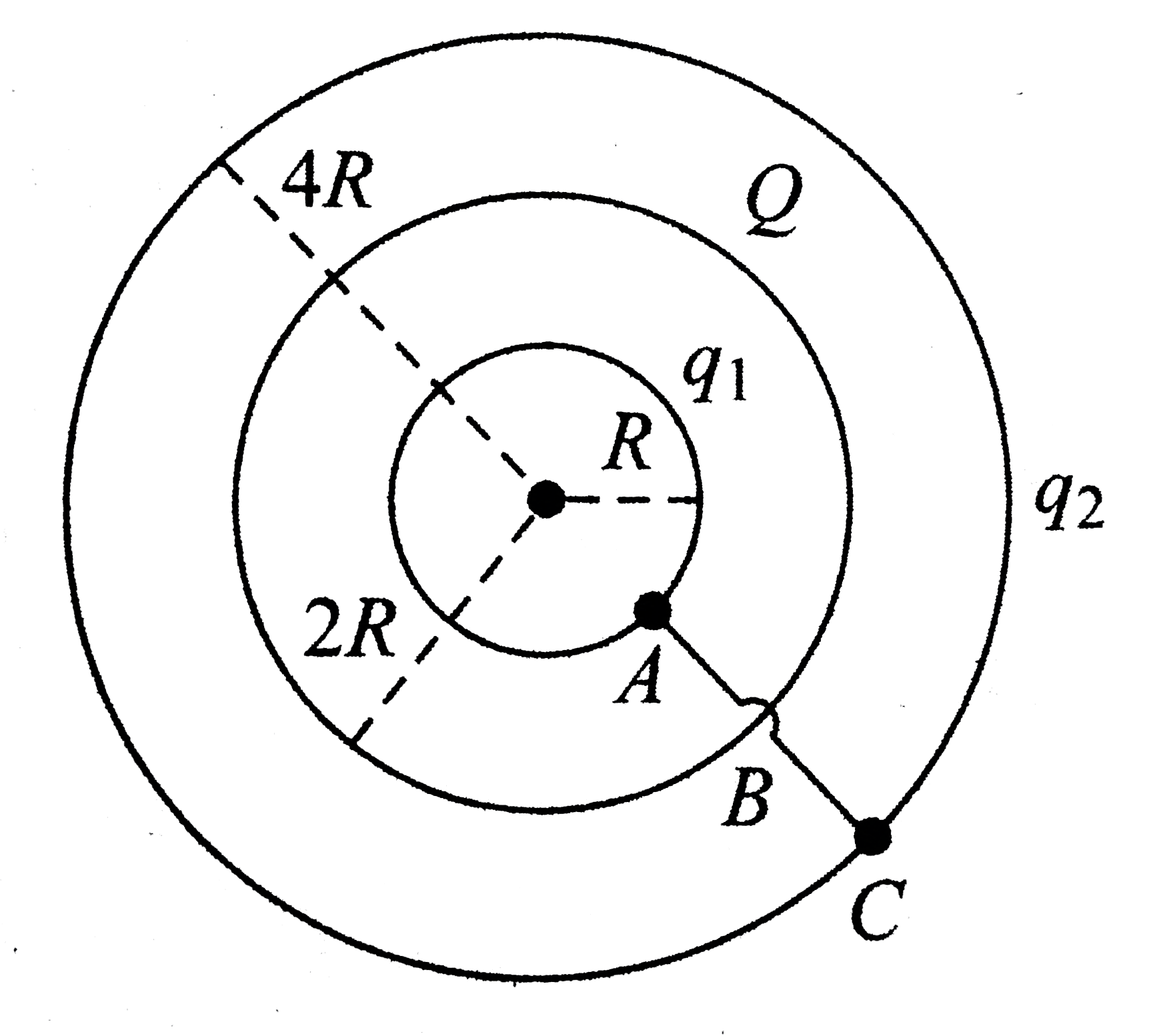 .
.
Hence, q1=−q2. Since A and C are connected by a conducting wire, so they have the same potential.
VA = potential of A
=14πε0q1R+14πε0Q2R+14πε0q24R
VC = potential of C
=14πε0q14R+14πε0Q4R+14πε0q24R
Equalizing the potentials of A and C, i.e., VA=VC, we get
q1R+Q2R+q24R=q14R+Q4R+q24R
or 4q1+2Q=q1+Q
or q1=−Q/3
Hence, q2=Q/3.
b. VA=14πε0R[−Q3+Q2+Q12]=Q16πnε0R
VB=14πε0q12R+14πε0Q2R+14πε0q24R
=18πε0R[−Q3+Q+Q6]=5Q48πε0R.
Topper's Solved these Questions
- ELECTRIC POTENTIALBOOK - CENGAGE PHYSICS ENGLISHCHAPTER - ELECTRIC POTENTIALEXERCISE - Single Correct
56 Videos
- ELECTRIC POTENTIALBOOK - CENGAGE PHYSICS ENGLISHCHAPTER - ELECTRIC POTENTIALEXERCISE - Multiple Correct
10 Videos
- ELECTRIC POTENTIALBOOK - CENGAGE PHYSICS ENGLISHCHAPTER - ELECTRIC POTENTIALEXERCISE - Exercise 3.3
9 Videos
- ELECTRIC FLUX AND GAUSS LAWBOOK - CENGAGE PHYSICS ENGLISHCHAPTER - ELECTRIC FLUX AND GAUSS LAWEXERCISE - MCQ s
38 Videos
- ELECTRICAL MEASURING INSTRUMENTSBOOK - CENGAGE PHYSICS ENGLISHCHAPTER - ELECTRICAL MEASURING INSTRUMENTSEXERCISE - M.C.Q
2 Videos
Similar Questions
Three concentric spherical conductors A, B, and C of radii r, 2R, and 4R, respectively. A and C is shorted and B is uniformly charged (charge +Q).
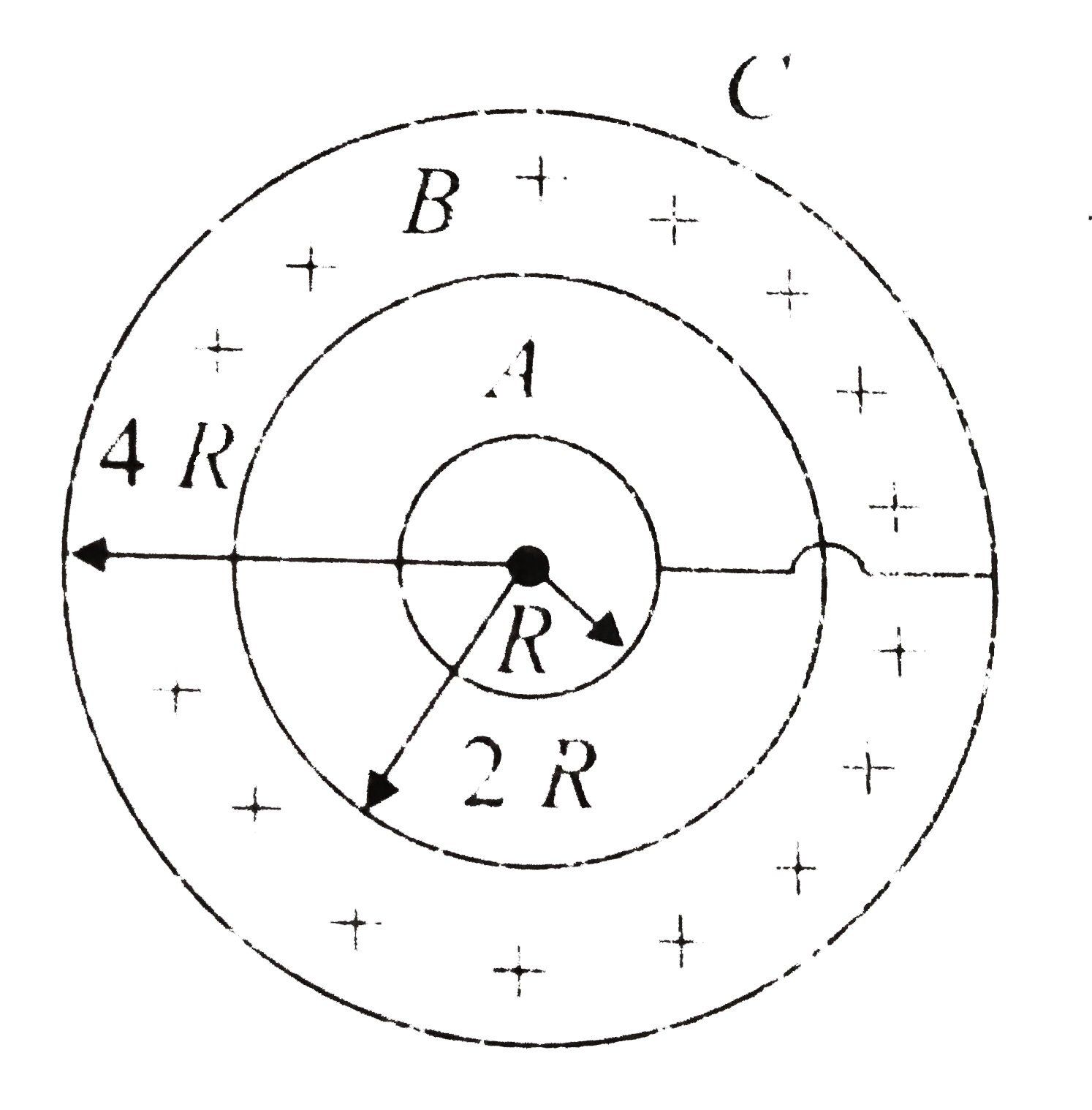
Charge on conductor A is
View SolutionThree concentric spherical conductors A, B, and C of radii r, 2R, and 4R, respectively. A and C is shorted and B is uniformly charged (charge +Q).
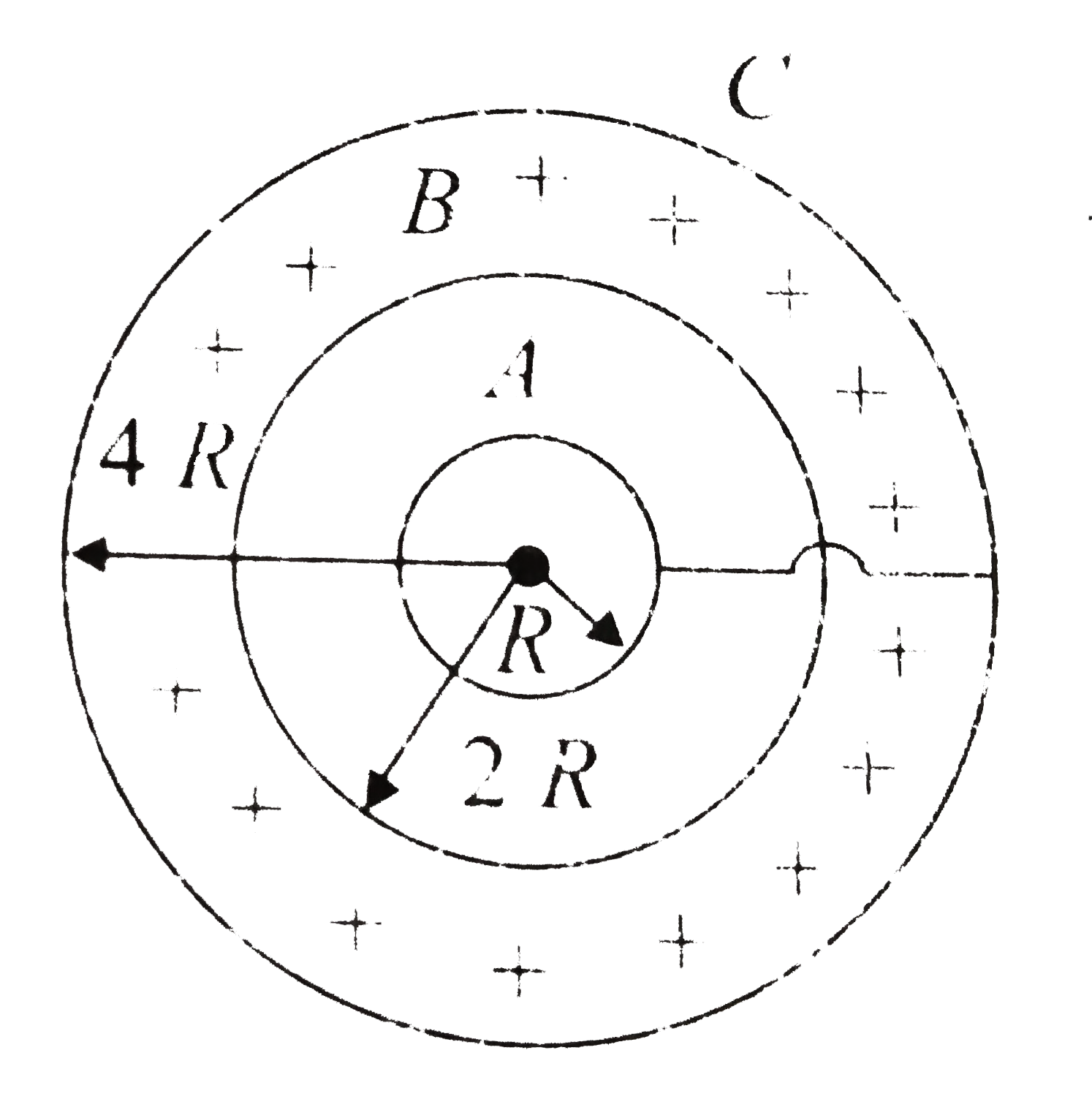
Potential at B is
View SolutionThree concentric spherical conductors A, B, and C of radii r, 2R, and 4R, respectively. A and C is shorted and B is uniformly charged (charge +Q).
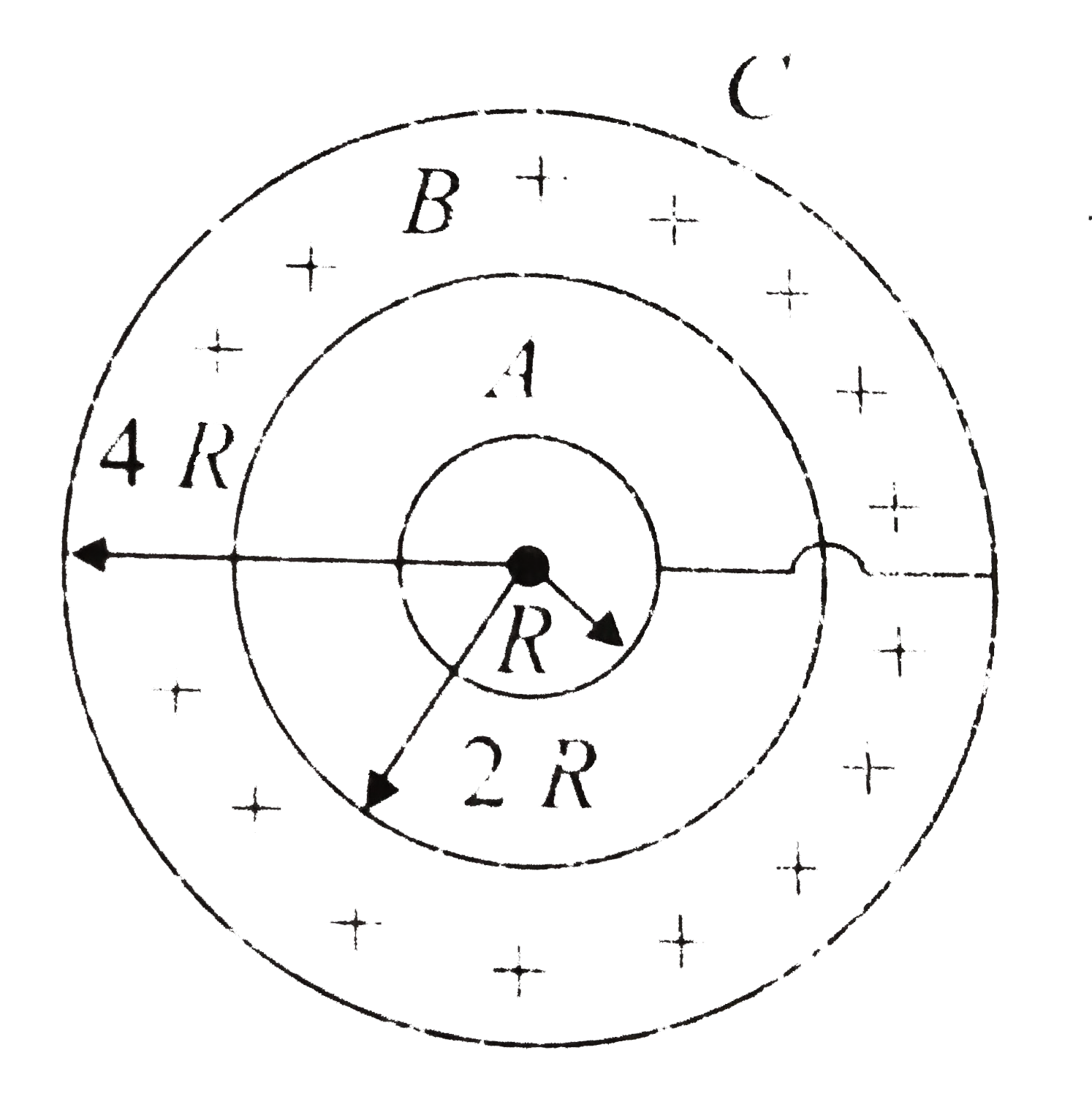
Potential at A is
View SolutionFigure shows three concentric thin spherical shells A, B and C of radii a, b, and c. The shells A and C are given charge q and -q, respectively, and shell B is earthed. Then,
View SolutionFigure shows three concentric thin spherical shells A, B and C of radii a, b and c respectively. The shells A and C are given charges q and -q respectively and the shell B is earthed. Find the charges appearing on the surfaces of B and C.

View SolutionFigure shows three concentric thin spherical shells A, B and C of radii a, b and c respectively. The shells A and C are given charges q and -q respectively and the shell B is earthed. Find the charges appearing on the surfaces of B and C.

View SolutionTwo concentric spherical conducting shells of radii r and R (r<R) carry charges q and Q respectively . The two shells are now connected by a conducting wire. The final charge on the inner shell is
View SolutionThree conducting spheres A, B and C are shown in figure. The radii of the spheres are a, b and c respectively. A and B connected by a conducting wire. The capacity of the system is
View Solution(Figure 3.78) shows three thin concentric spherical shells A, B and C with initial charges on A , B, and C as 3 Q, 2Q, and -Q, respectively. The shells A amd C are connected by a wire such that it does not touch B. Shell B is earthed. Determine the final charges qA,qB,andqC.
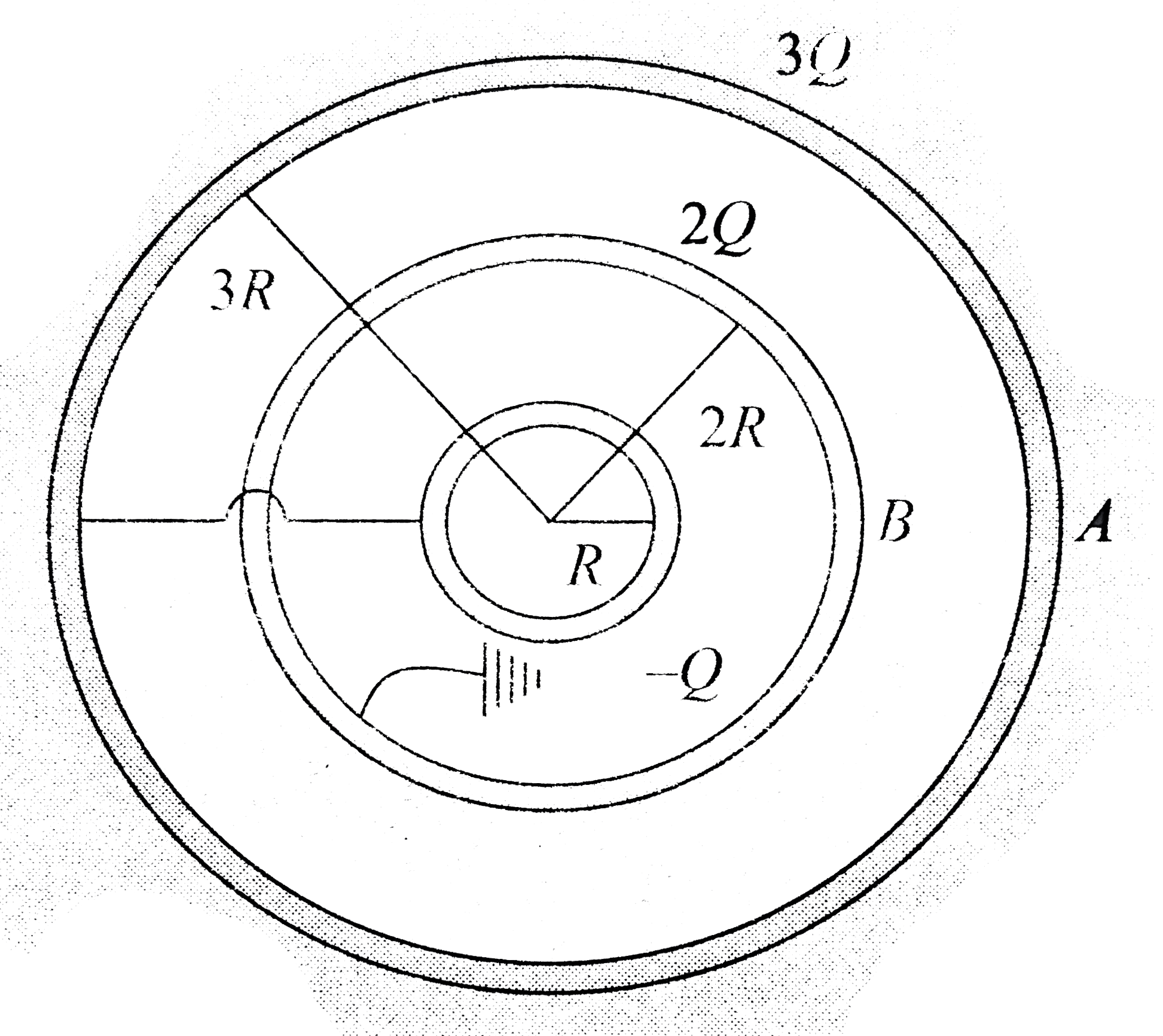 .
.
View SolutionTwo concentric spherical conducting shells of radii R and 2R are carrying charges q and 2q, respectively. Both are now connected by a conducting wire. Find the change in electric potential (inV) on the outer shell.
View Solution
